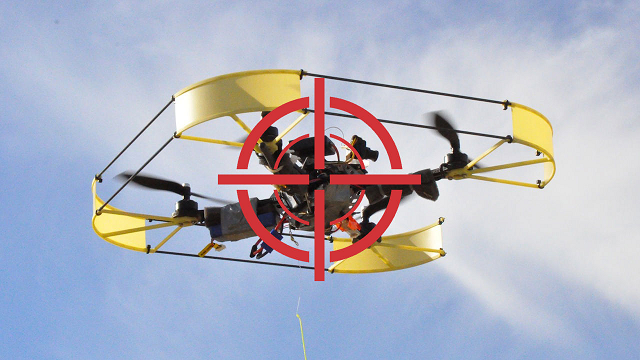
Researchers from the Korea Advanced Institute of Science and Technology (KAIST) have developed a method used for disabling unauthorized drones and other unmanned aerial vehicles in environments where they are prohibited.
Disabling Unauthorized Drones Mid-Flight
This involves the use of concentrated sound waves to disable the internal micro-electro-mechanical systems (MEMS) gyroscopes that balance drones during flight. These gyroscopes help the drones to stay level on a flight by stabilizing against imbalances from wind or other secondary influences.
Scroll down for video

Quo
The promoters of this project presented a paper titled “Rocking Drones with Intentional Sound Noise on Gyroscopic Sensors.”
The aim of the research was to show that by using resonant frequencies or sounds that vibrate at the same frequency as the targeted drone, to detect flying drones that shouldn’t be flown and to disable the same could be done mid-flight.
The report said, “These systems can malfunction because of physical quantities that sensors fail to measure or measure sensitively. Most commercial drones with sensors are not equipped with any ability to detect or protect against such attacks.”

Playtech
In a simulation, these researchers were able to prove that directional speakers could have the ability for disabling unauthorized drones from a distance of up to 120 feet, and increasing the decibels of the sonic weapon extends its range to a point. These speakers have to get the resonance frequency to work by syncing with the value of the frequency exactly. The resonant frequency of the gyros may be difficult to know, but the manufacturer of the offending drone usually has the resonant frequency of the gyros exactly and can be compelled to disclose it.
The scientists attached wireless speakers to remote-controlled drones—about 4 inches from their gyroscopes—and were able to prove the concept that showed an acoustic attack on a drone was possible, although the text used close range waves to minimize variables.
According to the same report, “Our real-world experiments showed that an acoustic attack can completely incapacitate a target drone equipped with a gyroscope, but we need to find out possible attack distance or sound level of a sound source required to destabilize a target drone in the air.
“The counter measure is still in its test phase, and Korea can defend against attacks by drones by using an anti-drone system, which can use smaller drones to attack and disable drones that come into protected air space or those who are suspected to be of ill intent.”
Watch the video below